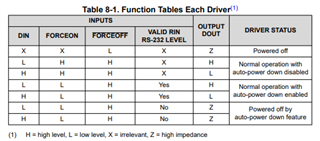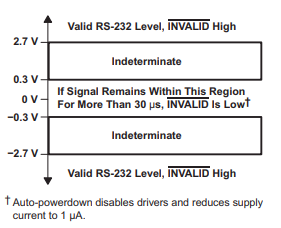Hello,
I want to develop a loopback test for an in-circuit part that was designed with autoshutdown enabled.
That is; ForceOn -> GND; /ForceOff -> VCC; /EN -> GND. VCC in my case is 3.3V
Is there a way I can bring the device out of shutdown mode to perform the loopback test?
I tried pulling the loopback to one side and the other. Pulling it to ground didn't work; Pulling it high introduced significant noise into the loopback, though it did bring the part out of shutdown mode.



